Barking oddities and their relations
This is our music, we love it loud
-Kiss, Crazy Crazy Nights
There was a time when natty wine was in its nappies (historically-speaking), so much so that you couldn’t move for the “f” word. F denoting funk. Funk meant everything that was strange about the wines, from the way they were made (sans additions) to the way they smelled and tasted. We had to learn a new language to circumnavigate this new bewilderness.
Sometimes an extreme wine is so gloriously strange that you drink it on its own merits. With pleasure.
Over the years, the winemaking has tightened up and the wines are seemingly more focused. And maybe we buyers are looking more for precision and less for wines that are clowning around. However, there is still room in our hearts for a few mavericks and sometimes an extreme wine is so gloriously strange that you drink it on its own merits. With pleasure. Quirk, strangeness and charm indeed.
And oddness can also be the place a wine comes from, the unorthodox vinification methods and the philosophy and personality of the individual vigneron. When something singular is created, the heart beats that much quicker.
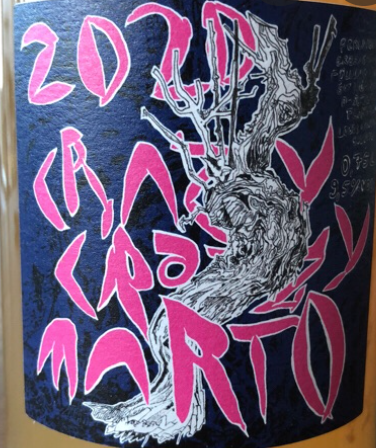
Marto Crazy Crazy
Germans macht spass. Here is a frothy number that does absolutely what it says on the wine label. So crazy that it is fermented twice, ancestral method, but all the junk remains. Old vines, grapes you don’t want to know about, maceration on skins, stick on the gross lees, ferment it with your “Prosecco grape must” and leave it all to hang in gooey suspension under the crown cap. Wildly aromatic, skinsy, chewy and a delightfully-crazy 9.5% abv for extra smashability.
#thewildwholebunch
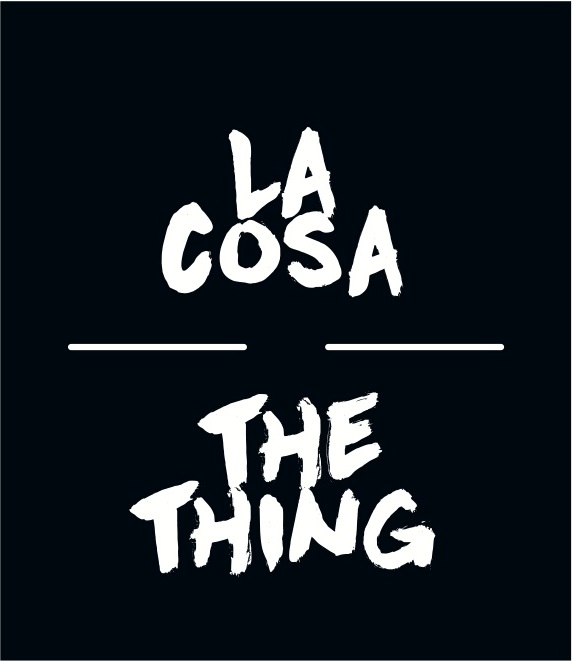
Alfredo Maestro La Cosa/The Thing
The wine equivalent of the Creature from the Black Lagoon as directed by John Carpenter in full gore-ovision. This is Alfredo Maestro’s Muscat hailing from an epically Martian landscape in the hinterland of Ribera del Duero, harvested early, then dried passito-style and fermented to madness. There’s botrytis here and heaps of VA there, as well as the occasional refermentation, but it’s hard not to love so much cloudy sweet grapey chutzpah.
#itiswhatitis
Vinos Oceanicos El Reflejo Blanco
This wine is about having your cake and eating it. If natural nerdishness is your thing, then your all boxes – and some unknown ones – will be ticked with maximum prejudice. Old clone of unloved grape variety? Check. Organic farming? Indeed. Soleo (sun-drying of grapes) – that’s the ticket. Skin contact – yep, 3 weeks of it. Georgian qvevri – why not, all buried in albariza. Flor? Yes indeed, you get both biological and oxidative ageing in this wine. No sulphur? Natch. The result – something which tastes sweet, bitter and salty (how do you like that popcorn), chalky and earthy, peachy and citrus. Strap in for a wild ride.
#oceansturneduptoeleven
Adegas Guimaro
The wines are beautifully fine and detailed, but it is the vineyards that rise vertically from the river that deserve a drop-jawed mention. This is indeed heroic viticulture, although crazy would be more apt descriptor. 450 -550 metres above sea level, old Mencia vines co-planted with a host of other local grapes,on crumbling slate terraces that constantly have to be rebuilt. Miss your footing and it is tumbletime into the gorge below.
#verticaltasting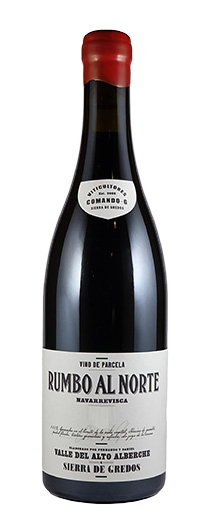
Comando G Rumbo el Norte
Dani and Fernando seek out the abandoned vineyards in the wildest locations in Sierra de Gredos. These can be tiny boulder-strewn parcels of 0.3 ha of gnarly old vines Garnacha. And what Garnacha, strong yet ethereal, Pinot-esque to coin a cliché. Around one barrel produced of this elixir. Crazy and crazy beautiful.
#garnachafromanotherdimension
Villalobos Carignan Reserva
You enter a clearing in the Colchaguan forest and find the formerly-abandoned grape vines climbing and curling every which way and loose. Winding around and up the trees, snuggling into bushes and brambly thickets and on the forest floor clumped into nests. At harvest time, there are other berries in the mix and you will probably pick a merry medley of different fruits. Here the grapes are picked by standing on shoulders or by clambering up a ladder leaning against trees. The vines, as you guessed, grow wild, canopy management and desuckering is done care of the local ponies and the resultant wine is made in the Valley of the Artists by the Villalobos family. It is a wine fairy tale.
#thetreesknees

Bianka & Daniel Schmitt Wild Pony
Talking of ponies, here are Bianka and Daniel Schmitt pushing their own particular boundaries. This particular wild equine has been given full rein. An annually changing blend of galloping grapes that go through various amounts of skin contact, individually aged in oak, and protected under a naturally occurring flor in the family’s cellar. The rich orange/pinkish colour with a slight cloudiness in the glass reminds one of ripe pears, orange zest as well as chamomile and clover honey. On the palate it has a fine acidity, a slight kick of tannin and a nice, mouth-coating texture with incredible length.
#noneighsayers
Ancre Hill, Monmouthshire
Monmouthshire is a lovely place and lurking in the Ancre Hill home vineyard are a few rows of Triomphe. Triomphe is short for Triomphe d’Alsace, a cross – and here you need to take notes – of Vitis Riparia x Vitis Rupestris and this hybrid itself crossed with Goldriesling. Triomphe was the first variety planted on the estate and the pet nat is made by blending the juice of the new vintage with the previous vintage base wine whilst it is still fermenting. Primary fermentation finishes in bottle producing a lightly fizzy wine of between 2 and 3 bar pressure. Nothing added to this wine at all. Incredibly purple– Triomphe is a teinturier grape – with sour cherry and blackberry jam nose and slightly herbal/medicinal back-note. Truly, the Welsh Lambrusco Rosso, with a real sweet & sour character to it and great sappy freshness. Call it vampire spit or laughing juice – it won’t be ashamed.
#thearcoftriomphe
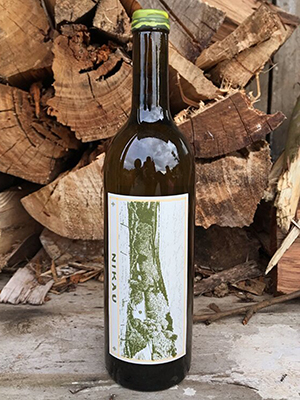
Tolone, Nikau Farm
This is no-touchy, but certainly all-feely, winemaking from Dane Johns of Momento Mori. From a wildish vineyard in Gippsland, Victoria (Australia) that has never experienced any chemicals, this is a project to do as little as possible and let the fruit be what it wants to be. Hence 48 hours of skin contact with a very light maceration. Long cool ferment. Sitting on the solids for months. Bottled by hand directly from that tank (without racking or moving the tank) and spending a further 18 months in bottle composing itself. The wine is very refined and a dainty 9% alcohol – but you wouldn’t know it for there is incredible structure and presence. The initial reduction gives away to subtle aromas of lime-flower and crystalline grapefruit and the palate has beautiful texture with a dried eastern spice from the lees and cushioning notes from the brief skin-contact. The acidity “rounds out” the whole, keeping the wine long, long, long on the palate. Tolone is an incredible offbeat white that is so much of its place.
#zerotohero
Buzet Totem, Domaine du Pech
Biodynamic and horse ploughing ain’t enough in the world of crazy. Ageing your wine for 14 years in a 200 year foudre (or lightning according to Google translate), however, merits to a call to the serious funny farm.
#totesamazeballs
Kheops Chardonnay, Les Vignes de Paradis
We’ve seen ceramic and concrete eggs in wineries making le vortex, but kheop a load of this three dimensional triangle, a wee Giza-like pyramid under which Dominique Lucas, for it is he, ferments his delightful Chardonnay. It’s all to do with energy. Like the pyramid, the wine is all angles and seeming in perfect proportion. It’s bonkers, but we love it. Pharoah-trade Chardonnay indeed! If this method works on cress, we’re in egg (sorry, pyramid) sandwiches for a lifetime!
#egyptiansavoie-faire
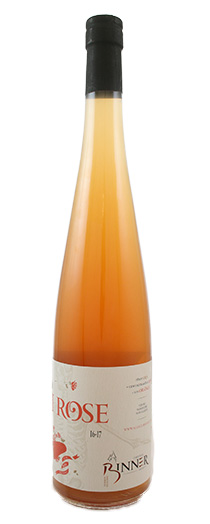
Si Rose, Christian Binner
Start flicking your NV signs. You are about to enter the kingdom of the solera wine. Two grapes given various skinny action (Gewurztraminer and Pinot Noir) and then added to the solera. So far, this rose comprises three vintages, but will be a perpetual one. Although rose-hued this is not a rosé, more that its aromas remind one of wild roses. And drinking too much will lead to cirrhosis. Not the best pun to have on your label.
#aroseisaroseisnotarose
Bianchduset, Vittoria Bera
We love it when an aberration mutates into a fine wine. You could say that in this case, beauty became the beast. This lapse to good judgement occurred during the 2000 vintage when a barrel of Moscato was left to ferment for too long a period, gained an extra % of alcohol – and boom! was disqualified from regular Moscato d’Asti status. No frothy jollies. The must was subsequently left for sixteen years under flor in a cement tank, as you do, to transmogrify into the swan that it is today. Amber, saline, dry, wild, umami to its beating core – Moscato. The glory of serendipity, a divine non-intervention, a forgotten wine, but a style we have previously experienced, one redolent of apricot, nuts and exotic spice. And all things nice. The follow-up version was made in 2007 (the wine is named after the vintage) and is equally peachy in all senses.
#flortotheceiling
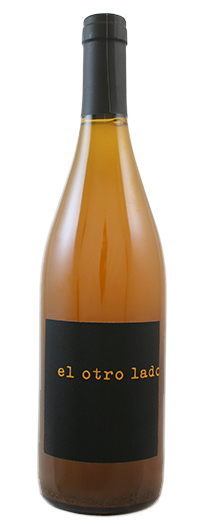
Pol Opuesto
polOpuesto is the vision of one Pol Andsnes (yes, I know), who is making wines that defy the local convention. You’re in a restaurant leafing through their bible of a wine list. You leaf in vain. There is no natural skin-contact Torrontes! Rightly, you walk off in a huff and hail your uber(natural) taxi. Fear not. That gaping list chasm can be bunged now with the arrival of one El Otro Lado Torrontes from one Pol Andsnes, an American chap who went to Argentina presumably to be closer to his near-namesake mountain range. No puns, if you please, about Andsnes and Boomps-a-Daisy. Pol was inspired to create this wine by the only other example (as far as we know) of a skin-contact Torrontes being made in Argentina. He greatly admired the wine in question, which he felt successfully demonstrated the potential that the variety might express were the skins to be used intelligently. Before making his interpretation of this wine, however, he spent several years in search of the right vineyard that would allow him to make a wine with comparatively more elegance and acidity. Eventually, he came across what was the only parcel of Torrontés in the [in]famous Gualtallary region, one known for its higher altitudes, calcareous soils and cooler climate. The grapes themselves were manually harvested with whole bunches crushed by foot and fermented in plastic tanks. As mentioned, the wine spent ten months in contact with skins. Fermentation took place in three tanks; when completed, Pol pressed one of these tanks to top up the other two. The whole process was naturally with indigenous yeasts and ambient temperature, the tanks located outside “under the stars.” The bottle is clear and the wine is cloudy with plenty of leesy crud to satisfy the most demanding of gloop aficionados. The wine is reminiscent of various skin-contact Malvasias of our acquaintance with a touch of florality, apricot and quince flavours, quinine bitterness from the skin maceration, spice from the lees and all with a fine seam of acidity and minerals. If Opuesto means opposite, then El Otro Lado certainly is taking an alternative direction with the Torrontes grape.
#oppositesattract
*
Interested in trying the wines mentioned? Contact us directly:
shop@lescaves.co.uk | sales@lescaves.co.uk |
01483 538820

